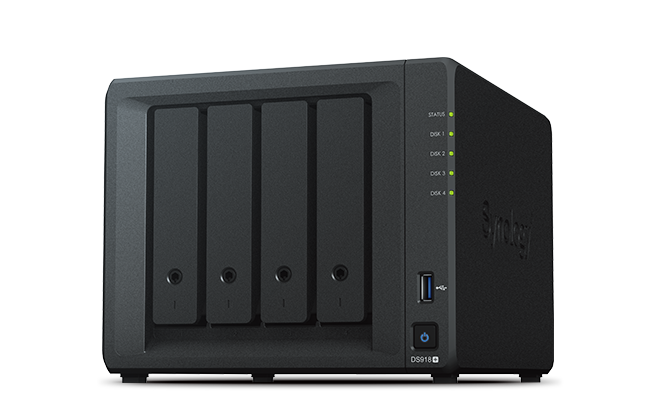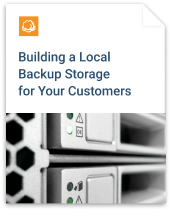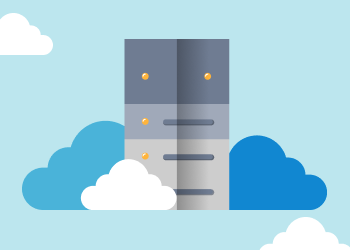When you are looking for local storage for a business, there are two options: NAS (Network Attached Storage) and SAN (Storage Area Network). Today, you will find out what the difference is between storage area network and network attached storage and whether it is NAS or SAN that fits your needs
What Is NAS?
Network Attached Storage (NAS) is a device used for storing data and it is usually connected through an ethernet network. It works as a useful storage option for your organization, as it makes it easy for you to access and share files throughout your company network.
The storage controllers in the NAS system manage the flow of data between the network and storage discs. These controllers ensure that file storage remains efficient and reliable. Its system has dedicated hardware and a pre-installed manufacturer OS. The main characteristic of the NAS is the number of bays you can insert hard drives into. From the hardware standpoint, you need to be aware of the NAS CPU and RAM. NAS offers a wide range of configurations for enterprises of every size and scale.
NAS is a computerized box for hard drives that can be accessed by multiple users or applications over the network

This is a Synology NAS device
Typical NAS use cases:
- Data storage
- File sharing
- Backup
NAS should be connected to a local network. It then can be accessed by multiple users. It can also be configured as a network share for simpler user access.
Network storage devices do not have pre-installed hard drives; you need to choose them.

Typical NAS infrastructure model
Are you tasked with choosing a NAS for your company or your clients? Check out our 5-step guide:
Further reading Choosing a NAS Backup Solution for MSPs and SMBs
What Is SAN?
Storage Area Network (SAN) is an array of disks that are attached to the server via a special network. In SAN, you get access directly to the storage as if it was your local hard drive. This makes the storage area network fast if configured correctly.


The right SAN infrastructure consists of a dedicated network typically relying on fiber optics, enterprise-grade storage systems, and special connecting hardware. The wrong SAN setup leads to network overload and instability.
SAN is a bunch of disks that act as one storage device over a network.

Typical SAN infrastructure model
The management of the IT infrastructures with SAN requires knowledge of low-level block protocols and their hardware and software medium, such as FC switches, optical cables, SCSI-powered protocols, etc.
Further reading SMB Backup Infrastructure: Local Systems

SAN infrastructure implementation costs are high from a hardware and management perspective. However, if you want to reduce your initial investment and still want to get high performance and scalability, such as offered by SAN, then you should invest in the enhanced option known as VSAN or Virtual SAN. It integrates storage management with a virtual layer and allows your management to manage storage resources through the same interface they use to manage virtual machines.
VSAN significantly cuts costs, as it doesn’t require you to manage separate SAN infrastructure. Instead, it utilizes the storage capacity of the existing virtualization host. Virtualized environments are easier to manage and cost less than SAN.
Typical SAN use cases:
- High-speed server transactions
- Data mirroring
SAN switch with optical Fibre Channel connector SAS can also be made faster by using high-end devices, routing planning, a dedicated network, and overall optimizations. Both storage solutions are often used within one organization. You may have a file server for storing user files and block storage for disaster recovery at the same time.
SAN vs NAS - What Are the Main Differences?
Here are some points of difference between SAN and NAS.
Purpose
The biggest difference between NAS and SAN is their purpose. NAS is designed basically for file sharing across the network. Once you connect a box with the ethernet, it allows your employee to share files, videos, and documents easily. On the other hand, SAN is designed to meet high-performance needs. It provides servers with access to consolidated, block-level storage.
Scope
NAS is suitable for small to medium-sized businesses that require an efficient file-sharing system. However, when you have a large business where everyone needs quick access to extensive databases and applications, then SAN is the only appropriate option.
Scalability
NAS systems offer good scalability within an operating environment. If the storage needs of your business grow, you can invest in additional NAS units or drives. On the flip side, you can expect superior scalability from SAN, which unlocks massive storage pools for your business without compromising network performance requirements.
Total Cost of Ownership
NAS systems are quite cost-effective, as they are easier to install, manage, and maintain. However, your total cost of ownership increases with SAN, which requires you to invest money in high-performance hardware and complex infrastructure. Besides, you need to hire experts who can set up and maintain SAN.
When you have a limited budget, and you are not interested in investing too much upfront, NAS is a good choice. However, only SAN can fulfill your large organization’s storage needs.
Performance
When you install a NAS system just to share files across your business network, it offers good performance. But when you start using it for heavy loads or intensive applications, the whole system will struggle. SAN, on the other hand, excels in its performance; especially when you need to access heavy applications, extensive databases, or large transactional systems. Hence, it is an ideal solution for large organizations with demanding environments.
SAN vs NAS Comparison Chart
Now you are aware of the fundamental differences between SAN and NAS devices and can get your bearings on the storage technologies ground. We have created a comparison chart with the key features of both storage types so you can make the right choice between SAN vs NAS.
|
SAN |
NAS |
|
Block-level access |
File-level access |
|
High performance due to the infrastructure nature, commonly faster |
High performance can be achieved using the network and software optimization, commonly slower |
|
May be configured in a very custom way |
Easy to configure a basic data storage use case |
|
Needs changes in the existing network |
May be published in a network as it is |
|
Needs separate servers for application or user access |
Independent device with server functions |
|
Suitable for any apps |
Suitable for latency-tolerant apps |
|
Grants read and write access for multiple users using an external manager |
Grants read and write access for multiple users out of the box |
|
Costs more due to the infrastructure expenses |
Cheaper due to the simplicity of deployment |
|
Durable |
|
|
Scalable |
|
|
Effective for big data or performance-crucial business |
Can be handy for a business of any size |
Should You Choose a NAS or a SAN?
The difference between a SAN and a NAS is obvious: whereas a NAS is an endpoint device, a SAN is a network of devices that act as one. Network area storage is far simpler and cheaper to buy and maintain. Setting up a storage area network requires knowledge, practice, and continuous maintenance. It also costs a lot to build one.
If you need storage for backup or data sharing within small teams, you are better off with a NAS. If you require high input/output speeds, or you have servers and applications that need to communicate with each other, hire a professional to build you a SAN.




